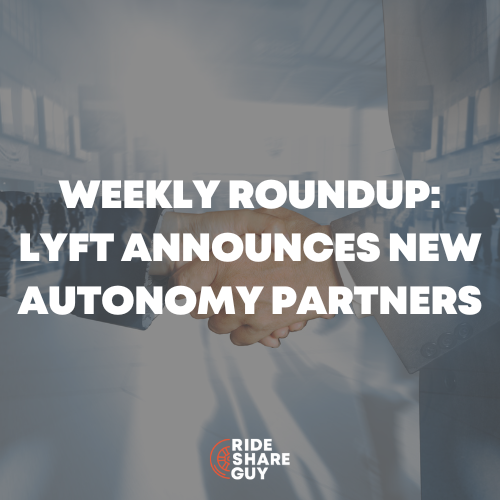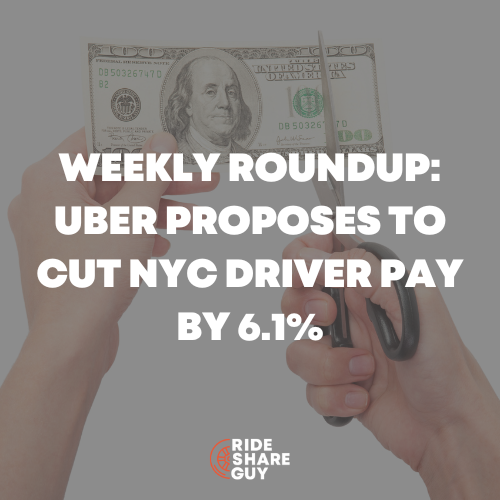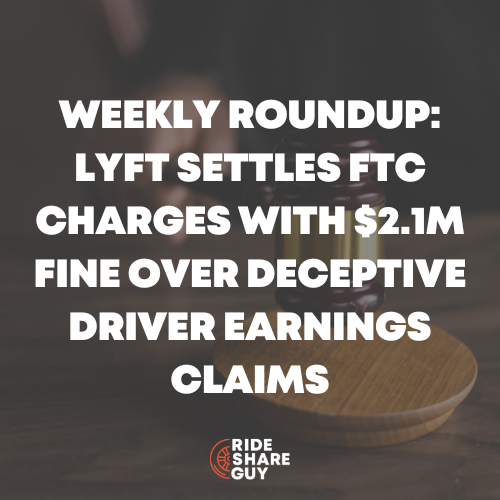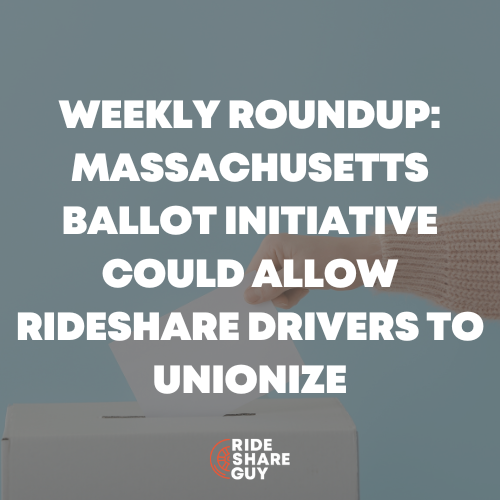In this week’s round up, senior RSG contributor John Ince covers a new study highlighting rideshare’s impact on pollution, e-bikes are getting a price hike, and Uber Eats is focusing on getting profitable.
Uber and Lyft generate 70 percent more pollution than trips they displace: study [The Verge]
Sum and Substance: Uber and Lyft generate 70 percent more pollution than trips they displace: study Uber and Lyft have weathered criticism about pollution and traffic congestion for years, but it’s been difficult to get an exact gauge about how much ride-hailing contributes to daily emissions. A new study released today claims to have a more precise answer to this question.
According to the Union of Concerned Scientists, ride-hailing trips today result in an estimated 69 percent more climate pollution on average than the trips they displace. In cities, ride-hailing trips typically displace low-carbon trips, such as public transportation, biking, or walking. Uber and Lyft could reduce these emissions with a more concerted effort to electrify its fleet of vehicles or by incentivizing customers to take pooled rides, the group recommends.
…“For ride-hailing to contribute to better climate and congestion outcomes, trips must be pooled and electric, displace single-occupancy car trips more often, and encourage low-emissions modes such as mass transit, biking, and walking.”
It’s a tall order, but both Uber and Lyft have shown a willingness to reduce their carbon footprint. So far, their methods include introducing bike- and scooter-sharing services, integrated public transportation scheduling and ticketing into their respective apps, and incentive programs to get drivers to switch to electric cars.
Lyft rolled out a multimillion-dollar investment to become a completely carbon-neutral transportation service through the purchase of carbon offsets, while Uber explored providing cash incentives to some North America-based drivers who use electric vehicles. …
My Take: Here’s some hard data to work with. Both companies talk about being carbon neutral – but the data doesn’t back them up. Maybe sometime in the future the data will back them up?
Lyft shocks with e-bike price hike, and Uber bikes leave town [SF Curbed]
Sum and Substance: If you’re in the habit of riding the pedal-assisted e-bikes that have become ubiquitous across San Francisco in recent years—but not all of San Francisco, more on that in a minute—your commute will become more complicated soon, particularly if you happen to bike in some of SF’s outlying neighborhoods.
Starting in March, Lyft, which operates the black-and-pink Bay Wheels rentals throughout the city, will raise prices due to operational costs and introduce some slightly dizzying new schemes to things.
Via a Medium post, the company explained that it will start charging more because “e-bikes need charged batteries and can be parked at stations or public bike racks, they cost more to operate.”
Starting next month, renting a bike will cost $2 and then 20 cents per minute (not mile) to ride for non-members who purchase single trips. Users who purchase an annual or monthly pass—they start at $15 per month—will receive a discounted rate of 15 cents per minute.
This is quite a change from the old system, in which Bay Wheels members paid zero dollars per ride. …
As the San Francisco Chronicle points out, it is probably not a coincidence that these changes are happening at the same time that Uber will lose its license to rent bikes in the city altogether on March 1.
My Take: This should come as no surprise. Uber gets the boot and Lyft raises prices. The real question is when will this spread to the bread and butter of the industry? The companies can’t maintain the status quo – especially now that they’ve promised investors profits by a specific date.
Uber Eats head steps down as company focuses on making meal deliveries profitable [CNN]
Sum and Substance: Uber Eats is getting a new boss as the company works to continue growing its meal delivery service without bleeding as much money.
Jason Droege, the Uber exec who launched Eats in December 2015 and helped grow it into the company’s second-largest revenue source behind its core ride-hailing business, announced Tuesday that he is stepping down from his role as head of Eats.
“Eats is a huge part of Uber’s future, and I don’t believe any of it would have been possible without Jason,” Uber CEO Dara Khosrowshahi said in a tweet on Tuesday. Longtime Uber exec Pierre-Dimitri Gore-Coty, who was previously vice president of Uber’s ride-hailing business outside North America, will take over Droege’s role. According to a company filing, Droege will be available until June to help with the transition.
“As Eats moves into its next phase of more profitable growth, I am happy to have Pierre at the helm, and look forward to him applying his nearly eight years of experience with our Rides business to capture the many opportunities that lie ahead for Eats,” Khosrowshahi said in the filing about the leadership change. …
During the most recent quarter, revenue from Eats grew 68% from a year earlier, to $734 million, but the division posted losses of $461 million. …
My Take: The emphasis is on profitability. No longer tolerating steep losses, Uber CEO Dara Khosrowshahi brings in someone who has a charge to make things profitable. Whether he can do it or not remains to be seen.
Will Uber and Lyft’s car-top ad pivot open a data gold mine? [TheDrum]
Sum and Substance: Will Uber and Lyft’s car-top ad pivot open a data gold mine?
Uber and Lyft have both thrust into car-top advertising in the past week in the hopes of generating some much needed ancillary revenue. While both ride-hailing firms continue to burn through capital, they may be on the verge of unlocking a data “gold mine” according to industry observers.
Lyft, which reported a net loss of $463.5m in the third quarter of 2019, believes it can chart a path to profit by the fourth quarter of 2021. As part of this plan, it acquired rooftop advertising firm Halo Cars for an undisclosed amount last week. Founded in 2018 and operating in New York and Chicago, the start-up installs smart LED screens atop taxis to serve geo-targeted full-motion video ads.
According to its website, it has almost blanket ad coverage of New York and could emulate this in any city where its cars are active. The ads are geo-fenced, are tracked and served in real-time, and can be activated on an array of variables such as weather, time, and location.
There’s an extra $400 income a month incentive for drivers to install Halo. It had previously restricted how many drivers could enter the scheme but now it is a Lyft subsidiary that number could skyrocket. There were 1.4m Lyft drivers as of 2017 and though it doesn’t put a number on how many cars it has on the roads, there’s clearly significant potential ad inventory to operate.
My Take: Well Lyft (and Uber) appear to be serious about this. Lyft went out and bought a company that puts ads atop cars and Uber has partnered with a company that does the same. Maybe this will work. It’s certainly not a loss leader.
Uber and Lyft Drivers Have a Simple Request: Clean Bathrooms [Vice]
Sum and Substance: Since February 12, 2,000 Uber and Lyft drivers have signed onto a letter to Los Angeles International Airport (LAX), demanding one simple improvement to their working conditions: “safe and hygienic” bathrooms.
“We work long hours and deserve better than the six foul-smelling and fly-ridden port-a-potties available to us at the nation’s 2nd busiest airport,” the letter reads. “Don’t treat us like third-class citizens—we’re first-rate professionals that are crucial to LAX’s growth and success.”
The six porta-potties and one hand-washing station available to Lyft and Uber drivers at LAX are notoriously gross—covered in human waste and overflowing with used toilet paper. Some drivers say they’d rather risk bladder infections or peeing themselves than use them. “This is simply unacceptable and disgraceful for an airport that brings in billions in revenue,” the drivers wrote…
“It’s sad that we had to ask for clean bathrooms in the first place, but it’s still a good step and it’s going to improve sanitary conditions,” said James Wiest, a Lyft driver who organized other drivers to demand clean bathrooms from LAX. “This is an indicative of the larger problem of how Lyft and Uber treat us poorly.” …
My Take: Amen. So the drivers get three more port-a-potties. Major victory? I don’t think so. The ones that are there aren’t clean, so why would three new ones be? It’s interesting that they petitioned the airport itself. I suppose who else are they going to petition?
Readers, what do you think of this week’s roundup?
-John @ RSG






